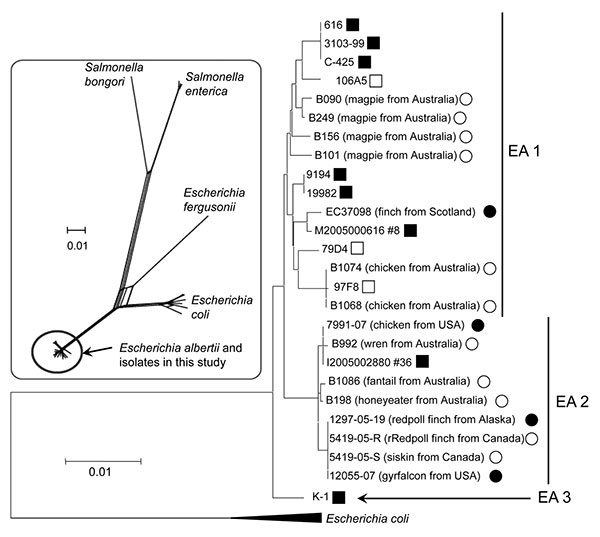Volume 16, Number 4—April 2010
Research
Escherichia albertii in Wild and Domestic Birds
Figure 1

Figure 1. Neighbor-joining dendrogram of bird and human isolates, based on nucleotide variation at 6 conserved housekeeping loci in the Escherichia albertii genome (multilocus sequence typing), supporting identification of all isolates as E. albertii. Three distinct clades are designated EA 1–EA 3. No clustering of isolates is apparent on the basis of their host type, geographic origin, or association with disease. Inset is a SplitsTree phylogenetic network of the genus Escherichia, showing the E. albertii/Shigella boydii serotype 7/13 lineage with respect to the other named species. S. bongori, Salmonella bongori; S. enterica, Salmonella enterica. Scale bars indicate genetic distance.
Page created: December 23, 2010
Page updated: December 23, 2010
Page reviewed: December 23, 2010
The conclusions, findings, and opinions expressed by authors contributing to this journal do not necessarily reflect the official position of the U.S. Department of Health and Human Services, the Public Health Service, the Centers for Disease Control and Prevention, or the authors' affiliated institutions. Use of trade names is for identification only and does not imply endorsement by any of the groups named above.